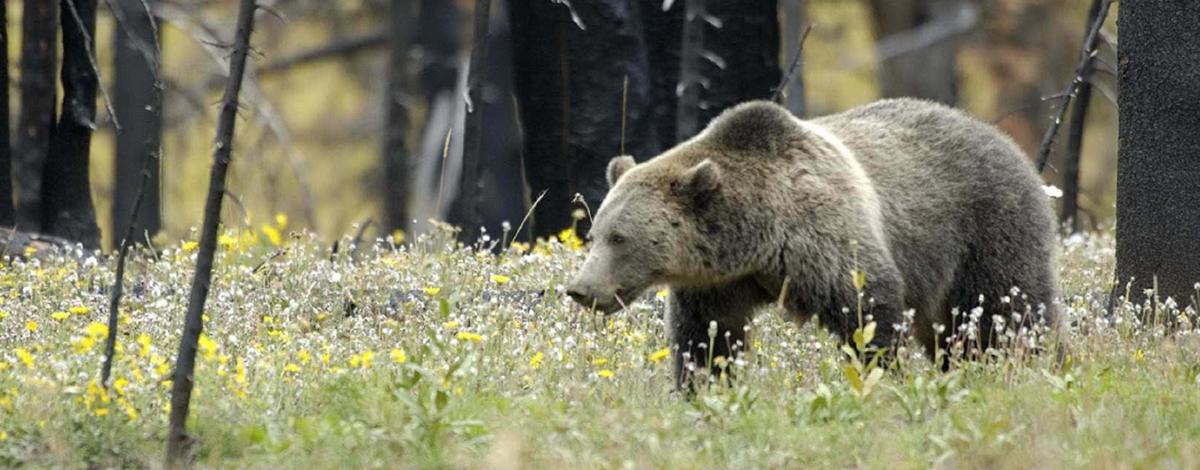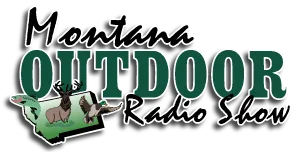Hunters not injured in encounter
WEST YELLOWSTONE – A grizzly bear was killed Monday in an encounter with bowhunters in Tepee Creek, north of West Yellowstone.
The two hunters reported being charged by a sow grizzly bear with two yearling cubs. Using handguns, the hunters shot and killed the sow. The yearling bears also charged at the hunters, who shot at and injured one of the yearlings. The hunters were not injured.
Bear specialists, game wardens and a helicopter pilot with Montana Fish, Wildlife & Parks, as well as law enforcement staff with the Custer Gallatin National Forest, visited the site on Wednesday. They confirmed the mortality of the adult bear, an older female. Officials found evidence of a yearling bear being injured, but they did not locate the yearling bears.
No further management action by FWP is planned. This incident is still under investigation by the U.S. Fish & Wildlife Service, who also provided assistance this week.
Be bear aware
Montana is bear country. Grizzly bear populations continue to become denser and more widespread in Montana, increasing the likelihood that residents and recreationists will encounter them in more places each year.
This time of year is when bears are active for longer periods as they consume more food in preparation for hibernation. This period overlaps with hunting season and other fall recreation activities.
Hunters have reported encounters with grizzly bears in other areas since the start of Montana’s archery season on Sept. 7. No hunters have reported injuries, and no other bears have been wounded or killed to date.
Avoiding conflicts with bears is far better than dealing with such conflicts. Here are some precautions to help residents, recreationists and people who work outdoors avoid negative bear encounters:
- Carry bear spray and be prepared to use it immediately.
- Make noise to alert bears to your presence and travel in groups.
- Stay away from animal carcasses, which often attract bears.
- Follow food storage orders from the applicable land management agency.
- Keep garbage, bird feeders, pet food and other attractants put away in a secure building. Keep garbage in a secure building until the day it is collected. Certified bear-resistant garbage containers are available in many areas.
- Never feed wildlife. Bears that become food conditioned lose their natural foraging behavior and pose threats to human safety. It is illegal to feed bears in Montana.
Some areas with dense concentrations of grizzly bears are very accessible to hunters, especially during the archery season. Keep these precautions in mind when hunting in grizzly country, which includes much of the western two-thirds of Montana:
- Carry bear spray and be prepared to use it immediately.
- Watch for and be extra cautious around bear sign, creeks and areas with limited visibility. Most attacks happen in surprise, close encounters.
- Hunt with a group of people. This can help you make localized noise to alert bears to your presence, and it may also increase your chances of survival in the event of a bear attack.
- Be aware that elk calls and cover scents can attract bears.
- Bring the equipment and people needed to help field dress game and remove the meat from the kill site as soon as possible.
- If you need to leave part of the meat in the field during retrieval, hang it at least 10 feet off the ground and at least 150 yards from the gut pile. Leave it where it can be observed from a distance of at least 200 yards.
- Upon your return, observe the meat with binoculars. Make noise while approaching the meat. If it has been disturbed or if a bear is in the area, leave and call FWP.
- Follow food storage orders from the applicable land management agency.
Grizzly bears in the lower 48 states are listed as threatened under the Endangered Species Act. Management authority for grizzlies rests with the U.S. Fish & Wildlife Service, working closely in Montana with FWP, the Forest Service, the National Park Service, the Bureau of Land Management, the U.S. Geological Survey, Wildlife Services, and Native American tribes. This collaboration happens through the Interagency Grizzly Bear Committee.
September is Bear Aware month in Montana. For information and education events on bear safety, click here.




